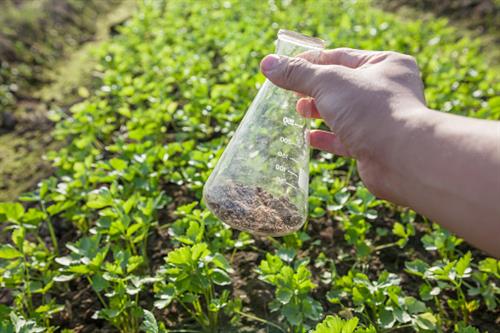Explore our blog featuring articles about farming and irrigation tips and tricks!
Agriculture Education Enjoys Popularity Boost

It may not be your father’s vo-ag classroom, but today’s agriculture education programs are enjoying a boost in popularity among students eager to learn about the many career opportunities the industry has to offer.
Student Numbers Growing
In Nebraska, 13 schools boasted new agriculture education programs as classes resumed this fall, the most impressive jump since the 1950s, according to State Director of Agriculture Education Matt Kreifels. A similar story is unfolding in other states, not only among those areas with strong roots in production agriculture, but some urban centers as well.
South Carolina reports a tremendous surge in agriculture education programs since passage of the state’s Education Economic Development Act, which led to incorporation of agriculture education programming into an Agriculture, Food and Natural Resources Career Cluster. In the first three years alone, about 22 schools opened or reopened agriculture education programs while half a dozen others added a second instructor.
Agriculture Education Transformed
Because agriculture offers opportunities in cutting-edge career fields like biotechnology, genetics and environmental services, students with a variety of backgrounds and interests are taking a closer look at the opportunities in agriculture. Their first exposure to many of the 300 or so jobs in the industry is often the agriculture education classroom.
That’s not to say there aren’t plenty of students with plans to head back to the farm. But, with the many sophisticated technologies and management systems that await them, even students growing up on farms see an advantage to delving deep into the courses offered through agriculture education programs. Both rural and urban students find abundant opportunities for leadership growth and development in the agriculture classroom as well.
Agriculture education programs have long taken advantage of rural school settings to provide students with firsthand cropping and livestok experience. But today’s agriculture education prorams are also offering students hands-on experience in such diverse areas as aquaculture, small animal care, greenhouse management, and environmental science centers. They are operating agriculture engineering shops and turf plots. Some are running entire farms.
Shortage of Agriculture Graduates
According to the National Association of Agricultural Educators, there are approximately 12,000 agricultural educators at schools across the nation, but demand still outpaces supply. The race is on to bring qualified instructors to the head of the agriculture education classroom.
Students who have agriculture education classroom experience are more likely to opt for an agriculture career path once they hit college and can expect to find plenty of opportunities upon graduation. According to data from the U.S. Department of Agriculture and Purdue University, there will be nearly 60,000 high-skilled agriculture-related job openings annually over the next five years, but only about 35,000 grades in agriculture, food science, renewable resources or environmental studies to fill them.
Agriculture education has a long history of providing both classroom and hands-on experiences for students interested in the field, dating back to 1917 when agricultural education first became a part of the public education system through the Smith-Hughes Act passed by Congress. Today, more than 800,000 students in all 50 states and three U.S. territories are able to take part in some type of formal agricultural education instructional program offered in grades seven through adult, according to the National FFA Organization.
Stay up to date on all T-L news and get alerts on special pricing!


